Lagoon Amusement Park Utah
Lagoon Amusement Park in Farmington, Utah has been intensely criticized for decades because of its dismal “Wild Kingdom Train” ride. The attraction, which Lagoon promotes as the “second-largest zoo in Utah”, features a miniature steam locomotive that runs past a collection of over 60 live exotic animals, including lions, tigers, cougars, leopards, and bears.
 Little has changed about the ride since 1967, when it was first installed. Big cats are housed in barren, concrete-floored cages with no natural vegetation and very little stimulation or enrichment. These enclosures do not meet the bare minimum standards of accreditation by the Association of Zoos and Aquariums (AZA). No educational information is provided other than small signs outside each cage displaying the name of each species. Children on the train frequently roar, scream, or throw things at the animals, and there are rumors of deliberate animal abuse by park employees. In one of these alleged incidents, a disgruntled train conductor deliberately blew hot steam into the face of a brown bear named Tippy, resulting in second degree facial burns.
Little has changed about the ride since 1967, when it was first installed. Big cats are housed in barren, concrete-floored cages with no natural vegetation and very little stimulation or enrichment. These enclosures do not meet the bare minimum standards of accreditation by the Association of Zoos and Aquariums (AZA). No educational information is provided other than small signs outside each cage displaying the name of each species. Children on the train frequently roar, scream, or throw things at the animals, and there are rumors of deliberate animal abuse by park employees. In one of these alleged incidents, a disgruntled train conductor deliberately blew hot steam into the face of a brown bear named Tippy, resulting in second degree facial burns.
Like many unregulated private zoos, Lagoon’s menagerie is inconsistent. Animals are both bred on-site and bought, sold, and traded with other private zoos and breeders (Lagoon claims that this is “rescuing animals”). This means that the origins and ultimate destination of the animals at Lagoon are unknown and untraceable. In the past, Lagoon has been cited by the USDA for disposing of unwanted animals by selling them to slaughter and for failing to maintain acquisition/disposition records.
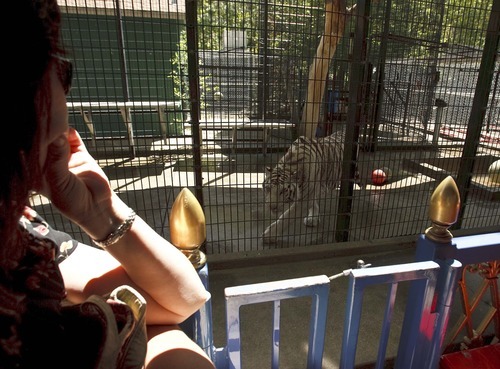
Riders view Siberian Tigers on the Wild Kingdom Train ride at Lagoon Amusement Park, Saturday, June 2 2012 in Layton. Protesters lined Lagoon Drive in Layton to protest Lagoon’s treatment of animals in the park as seen from the Wild Kingdom Train ride that circles a zoo where big cats, zebras, and other animals are confined to small enclosures.
Many visitors to Lagoon are unaware that the park houses live animals because much of the zoo is only visible from on board the train. Those who choose to visit the attraction are becoming increasingly upset about the outdated, prison-like environment that the animals are forced to live in, and there have been many petitions and protests attempting to convince the park to retire its animals to sanctuaries. The editorial board of the Standard-Examiner, Utah’s 3rd-largest newspaper, urged shutting down the zoo in a 2016 editorial, writing: “This is not 1967. We know better now — or at least we should.” The park continues to ignore these complaints by claiming that their zoo is “accredited” by the state and federal government; that “whether cages are too small is a subjective opinion;” and that their enclosures exceed USDA regulations. This is nothing to brag about, as the USDA only requires that enclosures provide enough space for the animal to stand up and turn around in.
The USDA has repeatedly cited Lagoon for failure to comply with the federal Animal Welfare Act. Recurrent problems found by inspectors included filthy enclosures, inadequately trained employees, failure to provide sick and dying animals with veterinary care, and repeat animal deaths. A summary of these citations is as follows:
August 18, 2013: An animal keeper was hospitalized in serious condition after being gored in the leg by a wildebeest. Lagoon claimed to have “no information” regarding the incident. http://www.ksl.com/index.php?nid=148&sid=26536598
July 10, 2012: According to the (Ogden, Utah) Standard-Examiner, the USDA cited Lagoon for having water bowls inside an elk pen that were encrusted with dirt and algae.
September 27, 2011: The USDA cited Lagoon for failure to provide two leopards with adequate veterinary care. In contradiction to its parasite-control program, the facility failed to retest the cats for parasitic infection after they tested positive for parasitic nematode worms and were given treatment.
September 27, 2006: The USDA cited Lagoon for failure to provide kangaroos with adequate veterinary care. The inspector wrote that “information on the health problem which led to the euthanasia of the adult female kangaroo on 7-22-06 has still not been conveyed to the kangaroo’s attending veterinarian.” The investigator added that such information was necessary to “ensure that the remaining kangaroos receive adequate care including any possible measures to prevent a reoccurrence.”
May 4, 2004: The USDA cited Lagoon for not correcting a previously identified violation for failure to provide adequate veterinary care. The inspector determined that animal “[h]ealth problems are not being detected, diagnosed and treated” and cited several examples. Both of a peccary’s eyes were “encrusted with amber colored material.” At various times, a camel was observed to have a lump on his face and an abscess and a lump on his lip, and there was no evidence that he had received treatment. Numerous animals were in need of hoof trimming, including a fallow deer whose hooves were “at least 4 inches long” and a peccary who had “overgrown front claws bilaterally that turned up on the tips.” A cougar, a camel, a fallow deer, and a peccary were observed limping. The inspector also wrote that health records were missing vital information. For example, there was no record of the dosage of a medication for an unidentified animal. Lagoon was also cited for failure to maintain facilities—the fencing for 12 bison was noted to contain protruding wires near ground level, one of which was approximately 10 inches long and formed a loop. The inspector expressed concern that the bison could “get a leg caught in loops of wire and potentially break a leg or injure themselves.” Lagoon was also cited for failure to provide a sufficient number of adequately trained employees.
The inspector wrote, “It is evident that the facility lacks employees and a supervisor who are adequately trained to maintain the professionally acceptable level of husbandry practices.” The inspector also wrote that despite being told by two USDA veterinarians that several animals’ hooves needed immediate attention, the supervisor didn’t agree that hoof care was needed. The inspector observed, “It appears that the facility does not understand the importance of proper hoof care in preventing lameness.” The inspector also noted, “The facility needs to evaluate whether they have appropriate facilities to provide safe handling conditions for the fallow deer when they provide the needed hoof trimming. … There have been anesthetic deaths and injuries (a fractured tibia and a ruptured tendon) from darting in the past when the fallow deer were worked without appropriate facilities.”
March 19, 2004: The USDA cited Lagoon for not correcting a previously identified violation for failure to provide adequate veterinary care. The zoo couldn’t produce documentation that the attending veterinarian had visited the site every two weeks, as prescribed by the program of veterinary care. It also couldn’t provide documentation of applicable and complete deworming treatments for hoofstock. Lagoon was also cited for failure to provide adequate drainage in a muntjac deer enclosure. It was observed to be covered in “muck ranging from 2 to 5 inches deep which exudes a strong excreta odor,” and the animals were forced to stand in the muck in order to reach the feeder in the enclosure. The inspector also wrote that Lagoon failed to provide 10 bison with water. The inspector also noted that the somewhat overgrown front toe of a fallow deer had been pointed out to a facility representative.
October 4, 2002: A USDA inspector noted that the evaluation of the deaths of a young zebra, a muntjac deer, and three Corsican sheep who died in late 2001 had not yet been completed and that two elk, four Corsican sheep, and one fallow deer would need more shelter space in the next two to three weeks.
July 6, 2001: In a letter to Lagoon, the USDA warned the facility that keepers must carefully observe newborns to ensure that they nurse. Lagoon was encouraged to develop a more effective husbandry program for neonatal animals following the deaths of a newborn elk calf and a fallow deer fawn.
April 19, 2001: The USDA cited Lagoon for not correcting a previously identified violation for failure to maintain records of acquisition and disposition. There were no disposition records for 11 fallow deer who were no longer at Lagoon and two buffalo who were sold to an individual for slaughter, as well as other animal transactions. The USDA also cited Lagoon for failure to provide elk with shelter from direct sunlight and inclement weather.
August 28, 2000: The USDA cited Lagoon for failure to maintain records of acquisition and disposition for animals who died or were born during the year.
July 20, 2000: The USDA cited Lagoon for failure to provide adequate veterinary care. A buffalo cow underwent surgery on May 2, 2000, to remove a rubber band which had been embedded around a toe. The animal didn’t receive sufficient follow-up care and developed an infection which resulted in the animal being euthanized. The inspector also found outdated medication and dirty needles used for injections. Lagoon was also cited for improper animal handling. The public had access to animals without the presence of a trained employee. The inspector also noted that necropsy reports for a fallow deer who had died and a stillborn elk were not available.
March 30, 2000: The USDA cited Lagoon for failure to comply with its veterinary-care program—a peccary hadn’t received testing or treatment for parasites. Lagoon was also cited for failure to provide complete information for two recently purchased camels. The inspector noted that a camel died on March 5, 2000, from peritonitis associated with a perforated ulcer and that the facility hadn’t provided its employees with outside training.
September 16, 1999: The USDA cited Lagoon for failure to provide the inspector with documentation addressing the problem of inadequately trained employees.
August 2, 1999: The USDA cited Lagoon for not correcting previously identified violations for failure to provide adequate veterinary care and employing inadequately trained staff. A camel exhibiting sweatiness and labored breathing was down for 12 hours and never received veterinary care. The animal died of peritonitis subsequent to a perforation in the digestive tract. The inspector also wrote that several elk remained thin, with protruding ribs. Nutritional supplements prescribed by the veterinarian weren’t being fed to the animals.
June 29 and 30, 1999: The USDA cited Lagoon for not correcting previously identified violations for failure to provide adequate veterinary care, for filthy enclosures, and for inadequately trained employees. A newborn fallow deer was never observed nursing and died 37 to 38 hours after birth. Several elk remained thin, with protruding ribs and hair loss. There was no record of deworming, routine tests for intestinal parasites, or vaccinations for the elk. The sheep enclosure had a high concentration of feces. The inspector directed Lagoon to conduct necropsies on any subsequent deaths to “facilitate herd health management and to assure adequate veterinary care.”
May 12, 1999: The USDA cited Lagoon for not correcting a previously identified violation for failure to provide adequate veterinary care. The male lion, Rhondo, died on April 18, 1999. A necropsy found complete bowel blockage. He had suffered from vomiting, weakness, shallow breathing, sticky feces, nasal discharge, a dry and matted coat, and thick, dry lips. He also couldn’t swallow medications. Employees failed to recognize the severity of his condition or accurately communicate his symptoms to the veterinarian.
April 8, 1999: The male lion identified as needing veterinary care during an April 2, 1999, inspection was suffering from anemia, arthritis, and abnormal kidney function. Lagoon was cited for repeatedly failing to develop a veterinary-care plan to address deficient capture and anesthesia procedures and the poor health of elk.
April 2, 1999: The USDA cited Lagoon for not correcting previously identified violations for improper feeding, filthy enclosures, and failure to provide adequate veterinary care. Lagoon failed to develop a veterinary-care plan to address deficient capture and anesthesia procedures and the poor health of elk. Lagoon was cited for failure to provide a lion with veterinary care. The inspector wrote that Rhondo “was thin to the point that the ribs and hip bones were prominent. He was weak and had difficulty walking or even standing. … He was observed retching for a period of time and then vomited at least a cup of yellow-green fluid .… His tongue appeared pale …. There were no [records] … indicating that the animal’s deteriorating condition has been noticed.” The inspector also noted that dead-animal disposal must comply with all applicable regulations.
February 8, 1999: The USDA cited Lagoon for failure to provide adequate veterinary care after four fallow deer died because of anesthetics or poor darting techniques employed during tranquilizer use. The facility also had outdated medication, and seven elk in “a very small pen” appeared thin and had rough hair coats. The inspector recommended routine necropsies because of a high death rate and unexplained deaths. Lagoon was also cited for feeding moldy hay, which can contain toxins, to camels, sheep, and deer and placing a mineral block on the ground where there was fecal contamination. Lagoon was again cited for failure to provide seven elk with sufficient space. A zebra and her 7-month-old baby as well as 16 Corsican sheep also weren’t provided with adequate space. Lagoon was cited a sixth time for filthy enclosures. The inspector wrote, “Excessively soiled bedding has been a chronic problem at this facility.”
October 16, 1997: The USDA cited Lagoon for inadequate drainage that caused elk to “stand in the muck” while eating, enclosures that were filthy with an excessive accumulation of waste, and failure to record the death of a cougar in its disposition records.
Other incidents not recorded by the USDA include:
In 2002, a young elk died from a strangulated hernia five days after being gored by a large bull elk that was in the same pen. Before the incident, visitors had warned park staff that the bull was acting aggressively, but no action was taken to separate the animals. http://www.heraldextra.com/news/local/elk-death-at-lagoon-s-zoo-prompts-criticism/article_9df51128-fb14-575e-9166-7ecb01c23ba3.html
In August 1996, a 16-year-old girl who was working as a ticket-taker at the train ride was bitten by a cougar named Kumba after she stuck her arm inside the cage to pet him. The cougar clamped his jaws down on her forearm until a park security officer arrived and sprayed the cat with pepper spray. Per Utah state law, Kumba was later euthanized to test for rabies. No changes were made to the park’s caging and the employee was not fired as a result of the incident. http://www.deseretnews.com/article/506235/COUGAR-THAT-BIT-WORKER-AT-LAGOON-IS-EUTHANIZED.html
Here’s some media and articles that might be useful to archive on the site.
Lagoon Park Videos:
A video of the ride.
A good video made by an activist in 2012 that sums up concerns about the zoo.
https://youtube.com/watch?v=vSTxZRH8QXo%3Fstart%3D60%26end%3D347
Decades of Negative Articles About UT Lagoon Zoo:
2021 This petition has over 265,000 signers to close down the animal exhibits at Lagoon Amusement Park.
2020 Trip Advisor 1 Star Review stated: “had a really bad experience at Lagoon. When I went I noticed that the animals at their “zoo” had the worst living conditions, and after looking more into it, I noticed that they have pretty bad rep for there animal ride. After emailing David W. Freed the president of Lagoon, he told me that “there is no scientific evidence that an animal can feel happiness or sadness.” Such an unprofessional way to hand a situation. Especially as the president of a company. Expect more from me Lagoon. This must change.”
2019 Salt Lake Tribune: https://www.sltrib.com/news/2019/09/14/lagoon-denies-lion/
2015 Jason Gottfried said, “In the park, wild animals like lions, pumas, elks, kangaroo, zebra, leopards, tigers are kept in small metal cages on concrete floors. Think what you will of imprisoning a creature for recreational purposes in general, but there is no attempt to make these beings feel comfortable or to allow them to indulge in any kind of instinctive behaviors. It’s a frivolous animal prison, plain and simple. Nero would have loved it!” https://suindependent.com/lagoon-park-protest-animal-activists-utah/
2012 Salt Lake Tribune: Utah Protestors Want Lagoon to Close Animal Exhibits: http://archive.sltrib.com/story.php?ref=/sltrib/home3/54230919-200/lagoon-park-animal-andrew.html
Standard Examiner: It’s time for Lagoon to stop caging wild animals: http://www.standard.net/Our-View/2016/05/08/lagoon-cages-lions-tigers-amusementpark-wildlife-editorial
2019 College students protest Lagoon Amusement Park’s treatment of animals. https://www.globeslcc.com/2019/11/14/lagoon-wild-kingdom-train-zoo-animal-rights/
2016 Utah teens upset with treatment of animals at Lagoon start petition: https://www.ksl.com/?sid=40861354&nid=148
Lagoon denies complaints of animal abuse: http://davisclipper.com/bookmark/23158806-Lagoon-denies-complaints-of-animal-abuse
2002 Lagoon gets plea to give wild animals more space: http://www.deseretnews.com/article/944551/Lagoon-gets-plea-to-give-wild-animals-more-space.html
2000 Deseret News: Group protests at Lagoon: http://www.deseretnews.com/article/771926/Group-protests-at-Lagoon.html
…and many, many more.
USDA files regarding Lagoon
lagoon-park-abuse-corporation-pdf
As of 12/14/2021 the Lagoon Amusement Park 87-C-0002 was inspected once in 2014 and once in 2015 with no citations noted and then has not been inspected again since. In 2019 Amusement park spokesman Adam Leishman told The Salt Lake Tribune that the park has no plans to get rid of its animals, which include tigers and mountain lions. 6 YEARS with NO USDA inspection? What is going on there?
Photos of Conditions at Lagoon Park
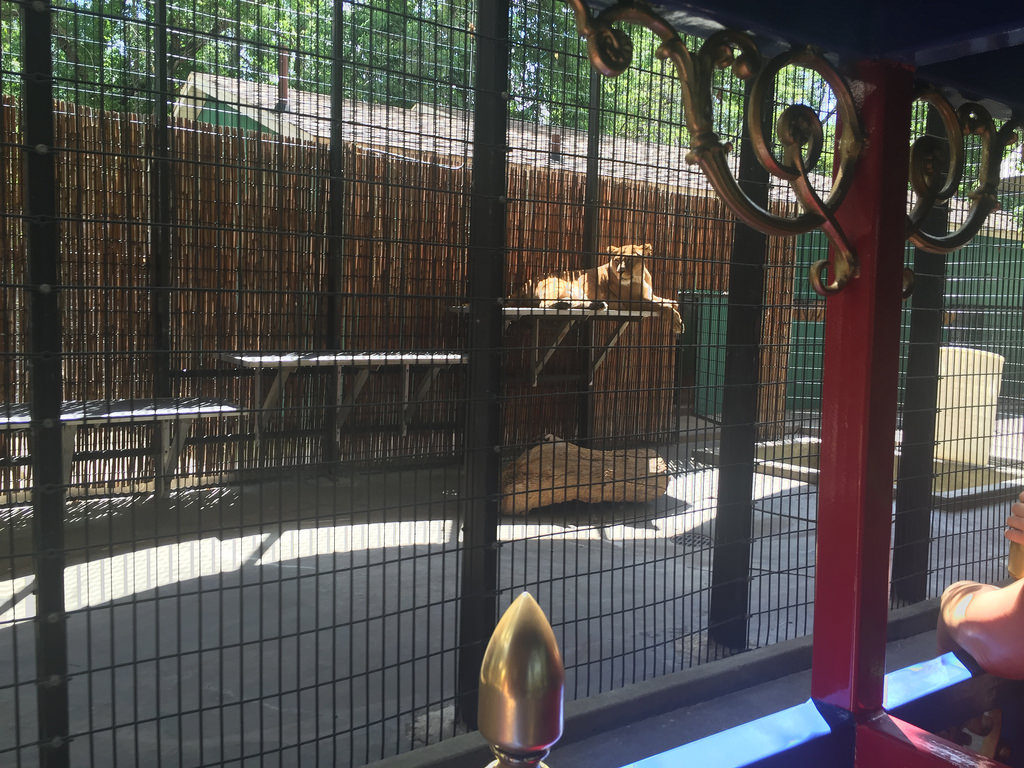
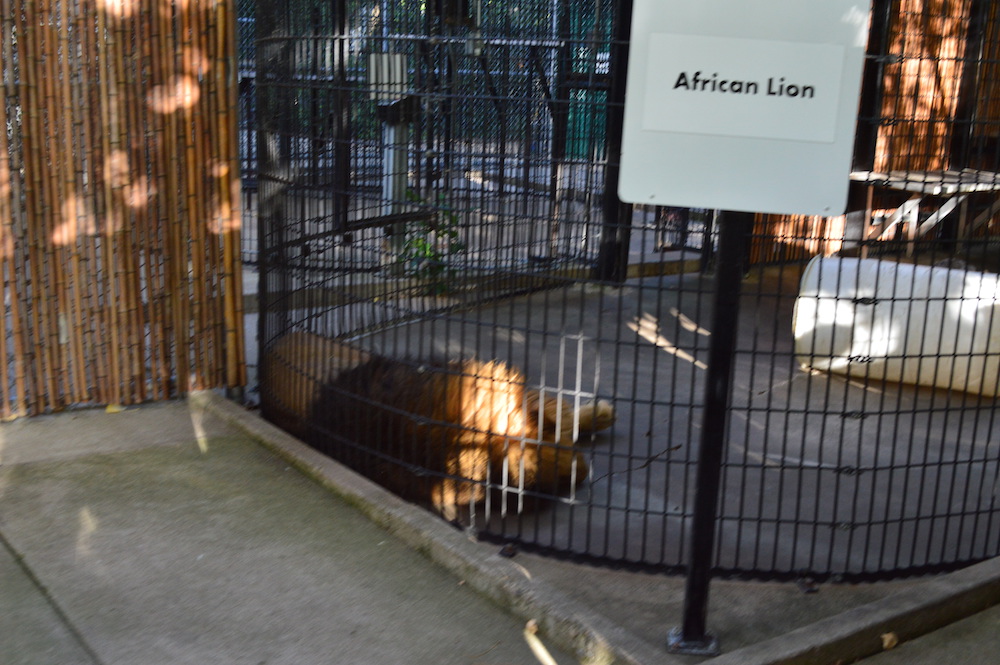
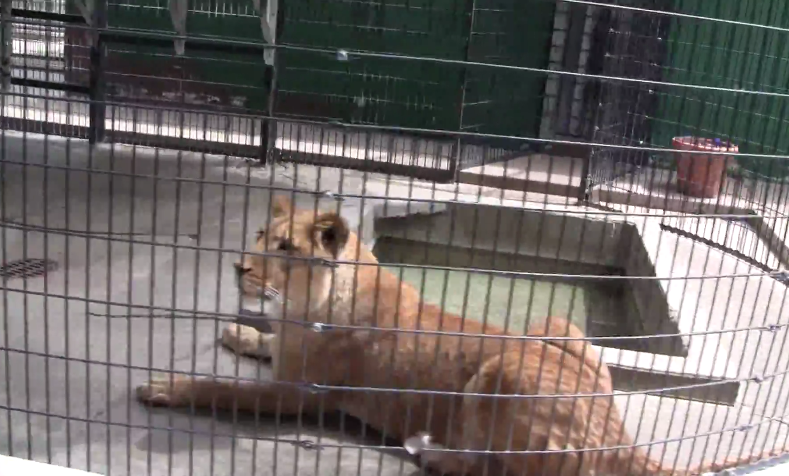
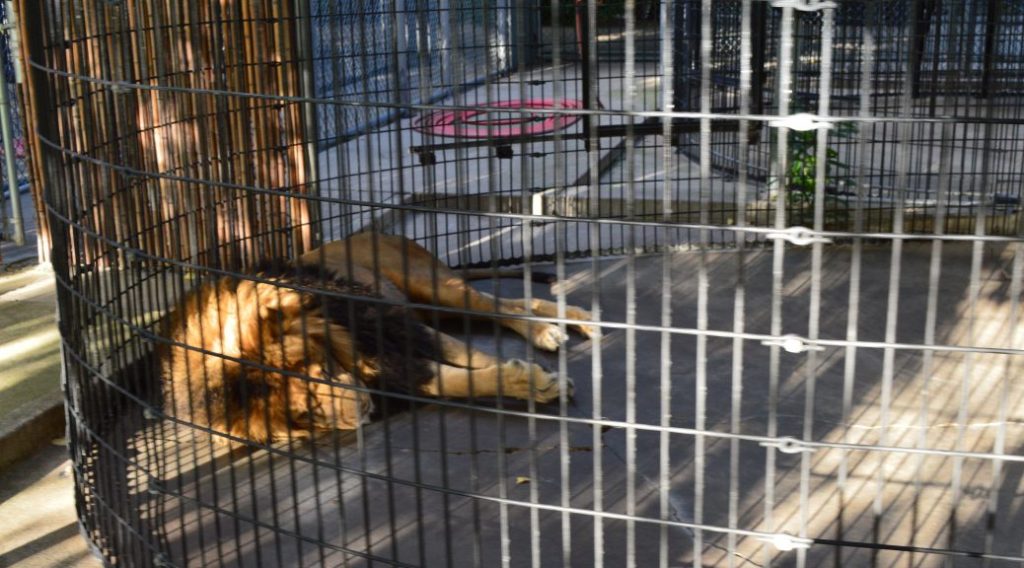

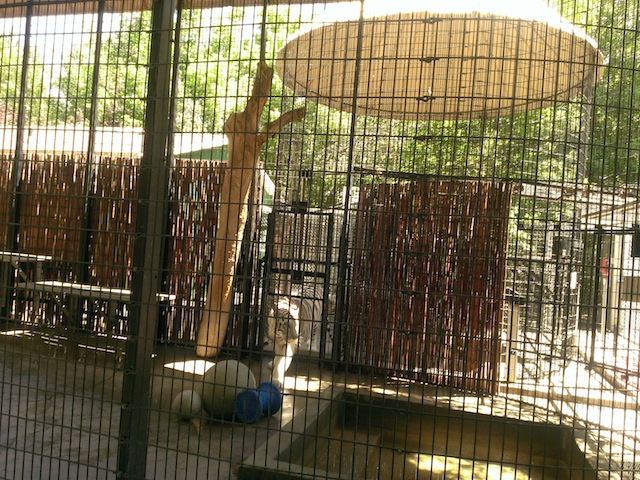

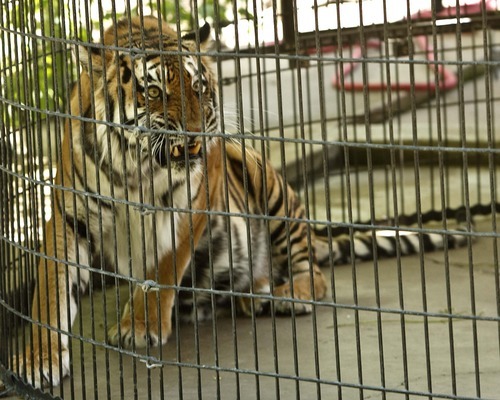
A Siberian Tiger as seen from the Wild Kingdom Train ride at Lagoon Amusement Park, Saturday, June 2 2012 in Layton. Protesters lined Lagoon Drive in Layton to protest Lagoon’s treatment of animals in the park as seen from the Wild Kingdom Train ride that circles a zoo where big cats, zebras, and other animals are confined to small enclosures.

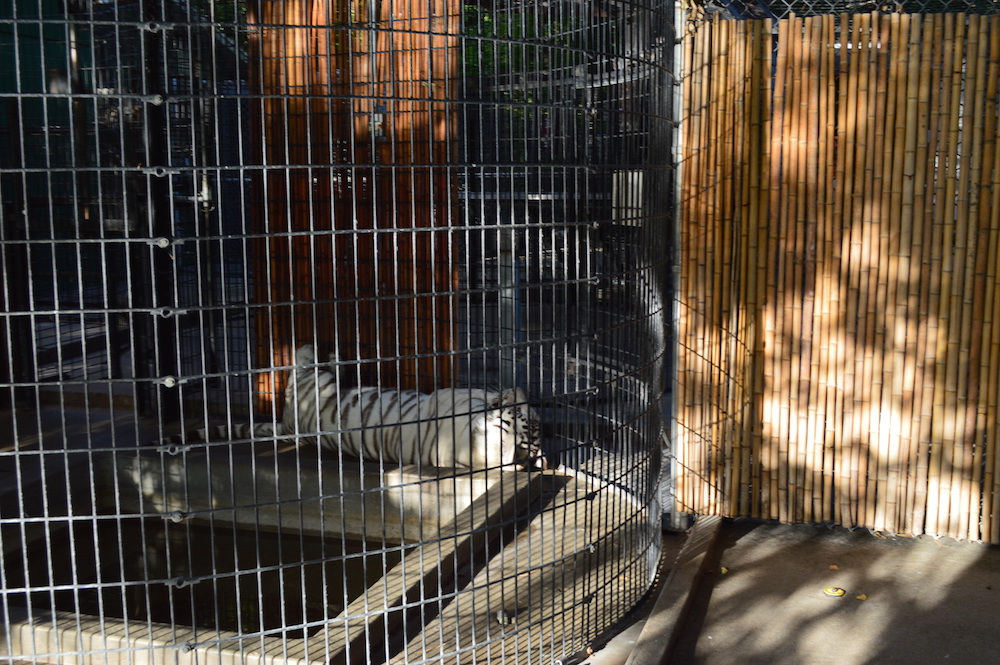
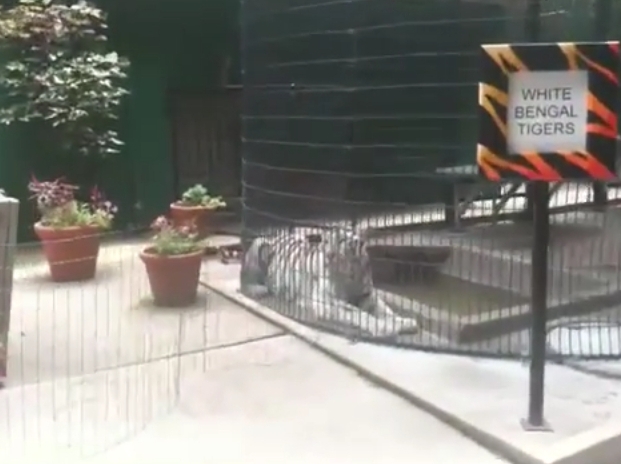
Which Side of History Will YOU Be On?
As of 12/14/2021 there are 215 supporters who follow a Facebook page called Friends of the Lagoon Railroad, while a Facebook page called Stop Imprisoning Animals! Lagoon Amusement Park has over 4,000 followers.
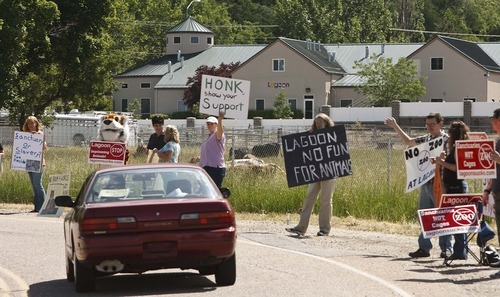

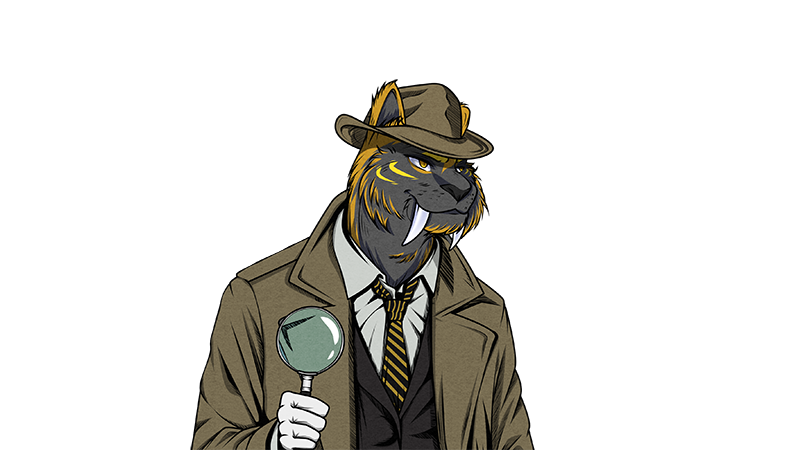
So I contacted Lagoon in regards to releasing the big cats to a sanctuary (The Wild Animal Sanctuary in Colorado) and this is their response… if you know the attraction, you will especially enjoy the last sentence in this letter…
“Dear Ms. Scott:
Thank you for your interest in Lagoon and contacting us with regard to our animals. The Wild Animal Sanctuary in Colorado looks to be a fine facility. The information provided by the Wild Animal Sanctuary states that their animals come from private owners who have the animals illegally or find they are unable to provide proper care for their animals, surplus animals from zoos, entertainment industry rejects or retirees, roadside attractions, exotic animal auctions, facilities that have been closed due to animal abuse, public safety concerns, or financial problems. Most of the animals are confiscated by federal, state, or local law enforcement officials. This criteria is not relevant to any of Lagoon’s animals.
While we appreciate your concern, we do not condone your contacting sanctuaries on our behalf. We trust that you did not disclose you represented the amusement park when making your inquiries.
Ms. Scott, your email has been shared with Lagoon’s senior management and all departments. I suggest that if you are upset by the animals, you forego riding the Wild Kingdom Train. However, I can tell you that Lagoon’s animals are healthy, happy, and content with their life at our facility.
Thank you for contacting us.
Sincerely,
David W. Freed, President
Lagoon Corporation”
I am not alone in my pursuit of the release of these animals from the dismal conditions and multiple USDA citations over the last few decades. If you have EVER taken the “Wild Kingdom Train,” at Lagoon, you know exactly what we are upset over. Their continued denial is telling at best. At a minimum they could admit their facilities are lacking and that are trying to improve conditions continuously.
Help out by showing your concern with contacting Lagoon or even better…
DO NOT RIDE THE WILD KINGDOM TRAIN AT LAGOON UNTIL CONDITIONS ARE IMPROVED!
Hello,
I too wrote lagoon an email just a few weeks ago and this is what they had to say to me. Very similar but a lot less feisty.
“Dear Mr. Young:
Thank you for contacting us concerning the animals on exhibit at the Wild Kingdom Train. Lagoon’s facilities meet or exceed the guidelines set forth in the Animal Welfare Act, enforced by the USDA. These are the same guidelines that govern legitimate sanctuaries who offer the public access to their facilities; if the public is not allowed on the grounds of a sanctuary, there are no required guidelines that must be met (i.e. no accountability). We do not breed the exotic cats. We do provide excellent daily care by our Animal Care Staff and veterinarians, our enclosures are cleaned daily and maintained in good condition, with safety for the animals and our employees a top priority. Although the space may not be “expansive, naturalistic habitats” that is the trend in zoos today, it is adequate. The animals receive an excellent diet and veterinarian approved enrichment. The animals show no signs of the stereotypical behaviors that would indicate stress, such as pacing, overgrooming, etc. Sanctuaries are willing to step in, however, are overwhelmed with the huge problem of captive-bred cats owned by private citizens or kept in inhumane conditions. It does not make sense for us to send our animals to a legitimate sanctuary when they are happy, healthy, and doing well at Lagoon.
Although relocating the animals may sound like a great idea on paper, the entire concept is far more complicated. First, Lagoon has made a financial and philosophical commitment, much like the legitimate sanctuaries, to care for our animals for the remainder of their lives. As a USDA licensed facility, we have agreed to take in animals that have needed a permanent home.
Mr. Young, your email has been shared with Lagoon’s senior management. By the way, the animal enclosures are not 10×10. The Wild Animal Sanctuary looks like a fantastic facility and I am sure they are doing good work. Thank you for contacting us.
Sincerely,
David W. Freed, President
Lagoon Corporation”
So as you can see, they are pretty set in their ways. I sent them a follow up asking them to at least upgrade their facilities for the animals. I will post back with an update.
-Cody